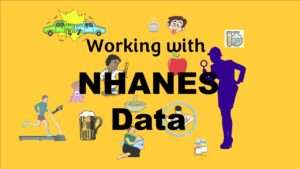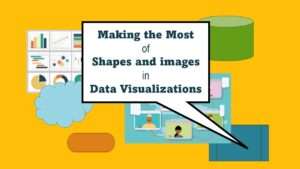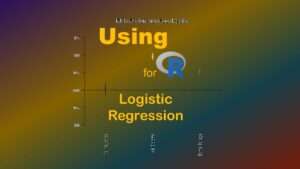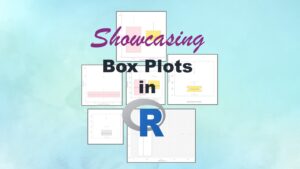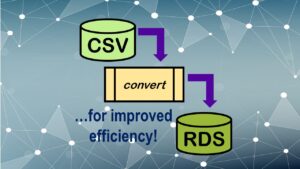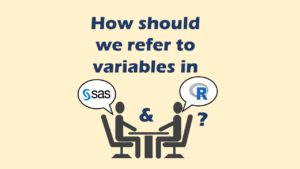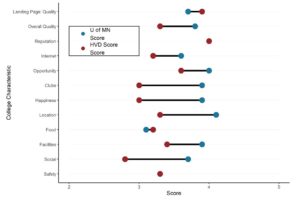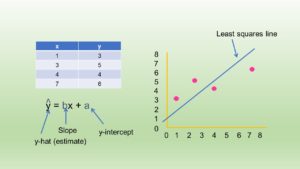Researching data science companies is an important topic Wyatt Sharber covers in his article on building a career in data science. There are categories of different organizations that seem to operate in certain ways, and it is important to remember that not all companies with data science jobs available are “data science companies”, per se. They may be companies focused on doing something other than data science – such selling retail goods online – but they need a data scientist to help them build up their analytics department, and do analytics on their core business.
I thought it might provide useful guidance to explain how I help my customers who are researching data science companies (or other companies in hopes of landing a data scientist job). This blog post explains my approach to helping my customers evaluate companies before applying for jobs so they can streamline their application process, and only focus on businesses that have values that align with their career goals.
Researching Data Science Companies to Classify Them
When researching data science companies that advertise on jobseeker platforms like indeed.com, you’ll realize that the companies seem to fall into categories. I will point out a few important categories here.
Recruitment/Talent Companies
These are companies that large firms (that have a lot of money and a lot of open positions) hire on contract to do their job recruitment for them. They often have company names that suggest recruiting for jobs or finding talent. If you apply for a job through these companies, you may not be told about the actual company and actual job you are interviewing for until well into the process.
While this may sound like a bad deal to the jobseeker, these companies may be the only gatekeepers to certain jobs, so you may have to deal with them in order to get a job at the company you want – especially large companies that hire these organizations to help them. So I encourage you to go along with the process, and as soon as you can find out who the actual company is that is interviewing you, do the research on them that I talk about in this blog post.
Famous, Longstanding Companies Outside of Data Science
I recently went on Indeed.com and looked at the data science job listings. I found listings for many famous companies, such as Pfizer – a pharmaceutical company – and Liberty Mutual – an insurance company. Neither of these companies is a data science company per se, but it is easy to imagine what a data science job would be like at either of these companies. At Pfizer, the data science would likely center around health and pharmaceuticals, while at Liberty Mutual, the data science would likely center around insurance and risk.
But this isn’t always the case, actually. The only thing you really know about these jobs is the companies. For all you know, you could be hired into a department that does some sort of billing, and your job is to build an artificial intelligence algorithm for fraud detection. From the jobseeker’s point-of-view, at this point, all you really know about is the company, not the job. So you have to start by evaluating the company, which isn’t hard, since these are famous, longstanding companies.
Both Pfizer and Liberty Mutual have long histories, and have been responsible for a lot of different actions. It is important for the jobseeker to decide – do I ever want this company on my resume? How will I tell people in the future as to why I chose to work for this company? Some people might cite that Pfizer was responsible for one of the COVID-19 vaccines, and that Liberty Mutual has a strong social justice perspective. In any case, if you have a bias against either company, it’s best to find out early on, before you get too far into the application process.
Government, Non-profits, and Academia
This sector is very unique for data science, in that it doesn’t use the recruitment/talent companies as often, yet is filled with organizations that are both longstanding and famous – like the United States Department of Defense, the Brookings Institute, and Harvard University.
Generally, researching data science companies in this sector is more about figuring out if the whole sector is the right fit for you as a data scientist or not – not about evaluating each individual organization. This is likely because they are all very similar in terms of their reputations (which tend to be good), types of work (which tend to be academic), and types of salaries (which tend to be bad). If you think you are interested in a career as a data scientist in academia, I strongly encourage you to read this blog post and watch the linked videos on it, where I describe what these jobs are like.
Private Companies You Don’t Know Much About
Whether you are looking for jobs from a job seeker site or you end up working with a “headhunter” or talent coordinator at one of the recruitment/talent companies, you may realize you are interested in a job at a firm you have never heard of, or otherwise know very little about. It is important that you do a significant amount of research about these types of companies online before you interview for a job with them. That’s because you want to make sure that you know what you are getting into if they start acting like they want to hire you during the process.
Researching a Company New to You
I thought I’d teach you how to do this by giving you an example. As I said, I went on Indeed.com and I searched for data science jobs. I saw jobs come up from the places I listed above: talent/recruitment companies, famous private sector companies, famous public sector companies, and companies with names I didn’t know. I decided to pick one from the last category, and show you how I’d research that job position.

This job looked like an excellent first position for a new data scientist.
However, I had never heard of the firm GSSA, LLC.
The name also didn’t give me any hints as to what this firm does.
I put together some of the information from the job announcement into a graphic below.

I also took note of some of the wording about GSSA, LLC from the job announcement materials:
GSSA, LLC, a progressive political consulting firm, is actively seeking an experienced data professional to fill the position of Data Scientist. The Data Scientist reports to the Director and is responsible for gathering, assessing, and presenting data from voter databases, public opinion polls, the U.S. Census Bureau and other sources; identifying and interpreting meaningful patterns; conducting randomized control trials (experiments); and compiling visualizations and reports.
GSSA, LLC, is a progressive political research firm located in the LoDo area of Downtown Denver. We follow a hybrid work model, designed to give a high degree of flexibility while maintaining a base in-person business model. For this position, remote candidates will be considered.
When I searched for GSSA, LLC, on Google, I found a LinkedIn profile for the founder, and a web page with public information about the corporation. Also, when I looked for news about the company, I found a news article.
Founder’s Profile

I was very impressed with the LinkedIn profile of Noel Smith, the founder of GSSA, LLC. I am familiar with his alma mater, Liberty University, because I have tutored learners studying in their programs.
Smith has a degree in business, and a background in managing and owning businesses.
Public Records about the Company
Next, I looked at public records I could find about the company. I found one from OpenCorporates that provided the following insight:
- The company was originally established in 2011
- There was not much activity until 2016, when there were some changes of address and whoever was the registered agent
- The company is currently registered in the state of Colorado and is in good standing
I know that Liberty University, where the owner went to school for his business degree, is a Christian college in the South of the United States (US). It appears to me that GSSA was started in North Carolina (which is in the South), and only later moved to Colorado. It is obviously a small company that is lean, and can move around easily when necessary.
News about the Company
I admit, I did not look very hard, but I could not find a web page for the company GSSA, LLC. Maybe there is one, but I couldn’t find it. When I can find a company’s web page, I like to look at their press releases, because that way, I can figure out what their reputation might be like.
I also look for occurrences of the company name in the news. I was pleased to find this article in Blavity about how GSSA, LLC was involved in a civic engagement campaign to boost long-term Black voter turnout.
Why Researching Data Science Companies is Important
Why was I pleased to see that article about Black voters? Because this activity is consistent with my values, so if I were the job seeker, I’d be positively influenced by this news. As it is, after my research, I am positively inclined to promote this job opportunity to my customers learning data science and seeking a new job.
And that is the main reason to do research into prospective companies – because you want to see if they are consistent with your values. You may end up having this company’s name on your resume for the rest of your life. If you worked for a company that is against what you believe in, or has been disgraced in a scandal, how will you explain that to a future employer?
Hopefully, this blog post will help you sort out how you feel about these companies before you interview. Please makes sure to visit my blog and YouTube channel often to see updates on job seeking in data science, and get my latest career development advice!
Updated January 16, 2022. Added livestream video January 19, 2022. Added video January 22, 2022. Added banners and slider July 3, 2024.
Read all of our data science blog posts!
Researching data science companies who might be your future employers, but you don’t know where to start? Read my blog post to learn my simple approach.






















